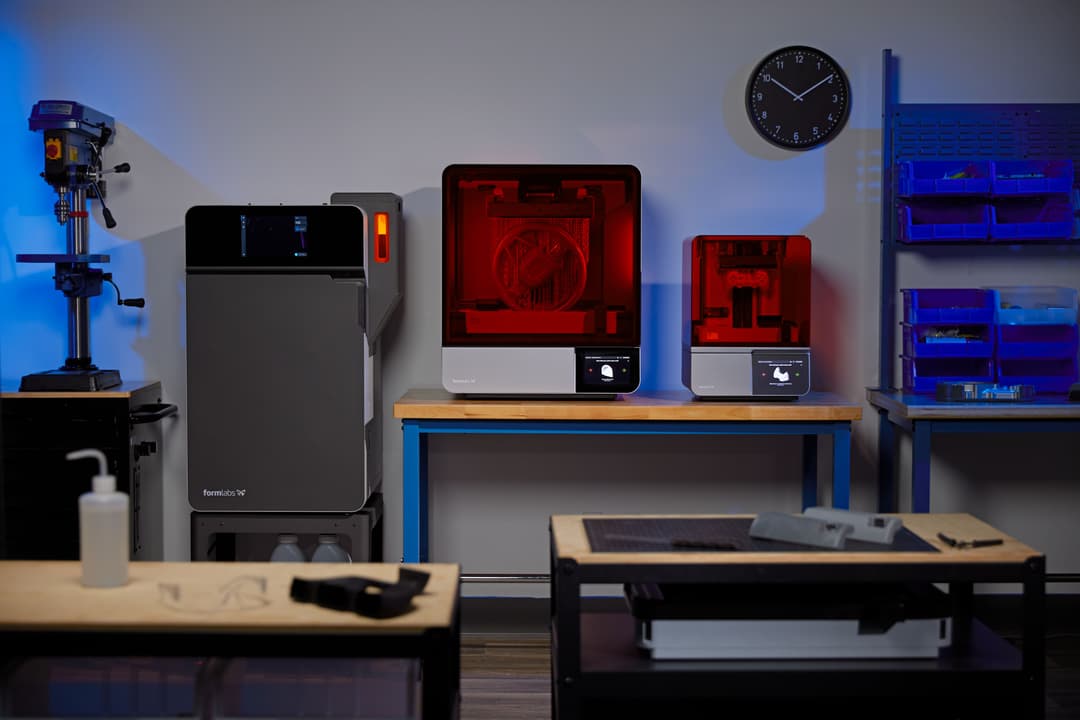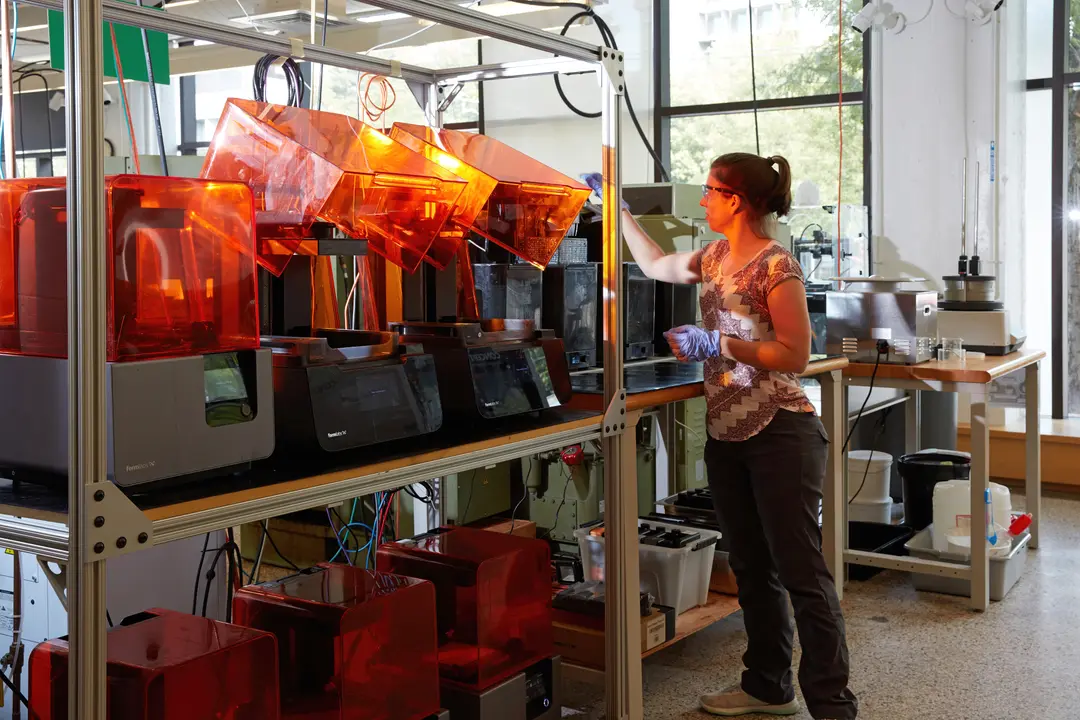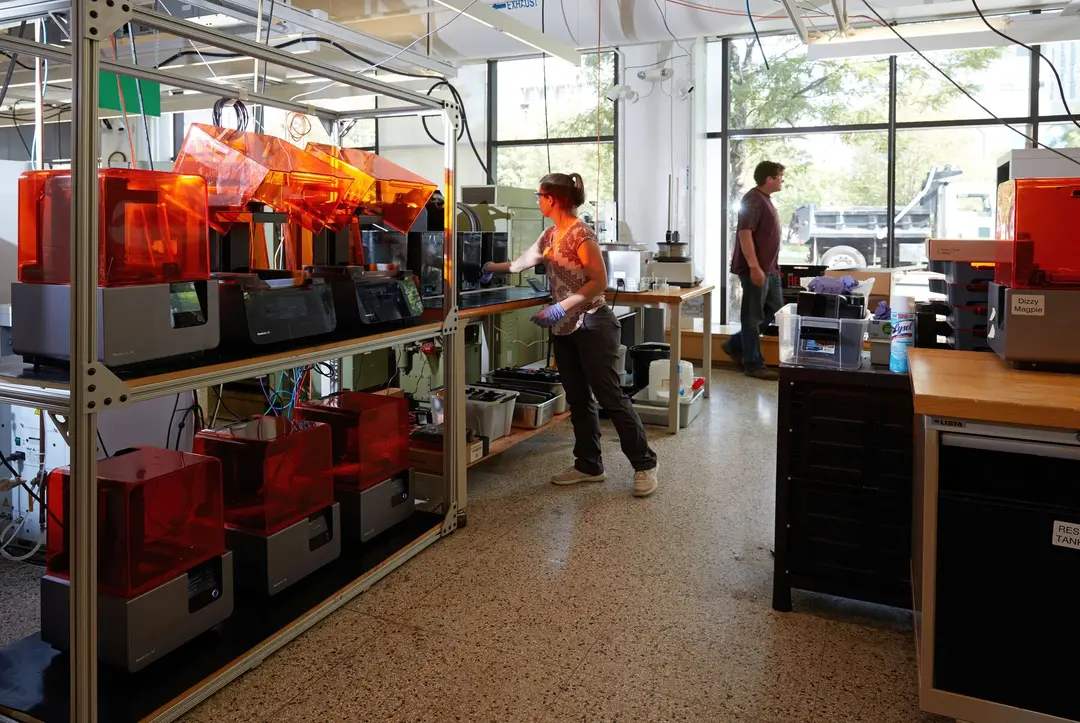3D printing has taken off in the past few years. Advancements in the 3D printing industry have made a technology that was once prohibitive far more intuitive for teachers and students. 3D printing has transformed a wide range of industries: engineering, manufacturing, dental, healthcare, entertainment, jewelry, audiology, and education. And now, it is time for schools to embrace 3D printing so that the students of today can become the innovators of tomorrow. In addition to helping with job readiness, 3D printing is an incredibly useful learning tool that encourages creativity.
How can educators teaching all levels get started with 3D printing in the classroom? In this blog post, we cover the following:
-
Why classrooms need 3D printing.
-
How to incorporate 3D printing in the classroom.
Benefits of 3D Printing in the Classroom
Classrooms need to modernize. This means equipping students with basic resources like modern laptops and audiovisual tools like projectors and smartboards. Instead of banning technology in the classroom, educators should enable students to learn with the help of technology. 3D printers may not sound basic, but they have proven themselves to be foundational tools. 3D printers have recently generated plenty of interest for education purposes. According to a Department for Education report, “3D printers have significant potential as a teaching resource and can have a positive impact on pupil engagement and learning.”
3D printing makes learning active, giving students hand-on experience and bringing their CAD projects to life. In addition to reading books and taking notes on lectures, students can apply academic concepts to 3D printing, helping them absorb the information better. This is exceptionally helpful for tactile learners. For example, in human anatomy classes, students can print bones and organs to better understand the human body. By 3D printing, students also gain analytical skills--they interpret the size, shape, movement, and relationships between objects.
Furthermore, 3D printing supports real-world understanding. Through learning by doing, students are able to see the impact their 3D printed parts can have in the real world. Educators play an important role in helping students understand the impact 3D printing has in daily life.
3D printing in the classroom has applications that extend beyond STEM (Science, Technology, Engineering, and Math) subjects. 3D resin printers are creative tools that expand imaginations. There is practically no limit on what students can print. Students without CAD skills can create 3D objects in VR then print them.
How to Incorporate 3D Printing in the Classroom
Learn 3D Printing With the Help of Formlabs
How can educators incorporate 3D printing in the classroom? They will need to learn 3D printing themselves. While there is a learning curve, Formlabs’ resources can help educators get started. Our Learning Pathways provide all the information you need, customized to your industry. You’ll acquire basic knowledge of scanning and design, print preparation, printing, and post-processing. Specific education topics include:
-
Unboxing, printing, and post-processing.
-
Making 3D models printable.
-
Implementation advice and curriculum examples.
Design a Curriculum With 3D Printing
The next step is to design a curriculum that incorporates 3D printing. 3D printing is suitable for any level of education: K-12, community colleges and technical schools, and higher education.
K-12 Schools
Some schools have already successfully integrated 3D printing in their curriculum. For example, University of Florida started a program for middle and high school students called iDigFossils that uses 3D printed fossils. iDigFossils brings the museum to middle and high school classrooms. Teachers designed activities that enabled students to explore fossils through the lens of evolution, biology, and climate change. Researchers at the program are also working on computer applications that can let students examine 3D images in layers. Educators at K-12 schools should evaluate how 3D printing can best fit into the subjects they’re teaching. At its core, 3D printing is about designing and making. Educators can apply 3D printing to a wide range of subjects and activities: recreate historical buildings, create human skeletons and internal organs, build math experiments, and make jewelry, to name a few examples.
Community colleges and technical schools
Community colleges and technical schools also leverage 3D printing. At Morrison Tech, students learn by doing, and 3D printing is a critical part of that ethos. Nearly all Morrison Tech’s engineering courses include 3D printing and the projects students work on address real-world problems. Students learn 3D printing for product development and prototyping--they’ve created functional parts like gears that are cured with the Formlabs Form Cure. Technical schools like Morrison Tech incorporate 3D printing to help students become acclimated to jobs that will heavily use 3D printing.
Higher education
3D printing has become increasingly common in higher education. According to a Deloitte study, here are the top 3D printing needs for higher education:
-
A multidisciplinary understanding of key Additive Manufacturing (AM) (related knowledge areas—material science, design, engineering, etc.
-
Better design knowledge, specifically design-for-AM skills.
-
A broader, more creative, and innovative mindset.
-
A better understanding of AM’s ties to existing manufacturing processes, not just AM.
-
A commercial mindset to understand the AM business case.
Colleges and universities seeking to incorporate 3D printing should assess their programs and how 3D printing can fit in. The key to implementing successful 3D printing programs is through a multidisciplinary approach that emphasizes experiential learning.
At UMass Lowell, that meant upgrading its sculpting and 3D design courses for the 21st century. Professor Yuko Oda uses 3D printing to modernize 3D Design, Sculpture, and 3D Modeling and Animation courses at the college with great results.
Write a Lesson Plan for 3D Printing
Educators of all subjects can seamlessly weave 3D printing into their lesson plans. With programs like Pinshape and Thingiverse, students can access a wide range of ready-to-print files. Easy-to-use CAD programs like Tinkercad enable students to design their own prints. With these free sources available, educators can elevate their lesson plans with 3D printing.
Science
An example of how educators can incorporate 3D printing into a science lesson plan is with earth science. Students can print layers of the earth, piece them together, and paint them. By printing the layers themselves, they can better familiarize themselves with the structure of the earth. Students can also print 3D molecular models for chemistry.
Engineering
In engineering, students can build their own structures by 3D printing separate parts. For example, they can make a functional 3D printed clock.
Math
3D printing is very well suited for geometry lessons. Students can 3D print all kinds of shapes, from simple to complex. They can also familiarize themselves with patterns. The Tessellation Escher Project encourages students to print tessellation shapes, then piece them together. Students can also create scale models that help them understand ratios and proportions.
Architecture
3D printing can help architecture students design and build prototypes of buildings. By 3D printing different components of a building, students can better understand how their design can be brought to life.
Art
The possibilities of 3D printing in art are endless. Students can make 3D snowflakes, musical instruments, and more.
History
Students can recreate historical landmarks and buildings by 3D printing them. For example, students can print Aztec and Mayan structures.
Conclusion
3D printing may seem like a luxury addition at first glance, but it has already become a key technology multidisciplinary education tool. An incredibly versatile technology, 3D printing has many applications in education, spanning education levels and subjects. In order for the students of today to become the innovators of tomorrow, educators should get started with 3D printing in the classroom.
Learn more about 3D printing for the classroom with our whitepaper FDM vs. SLA: Compare the Two Most Popular Types of 3D Printers For Education


